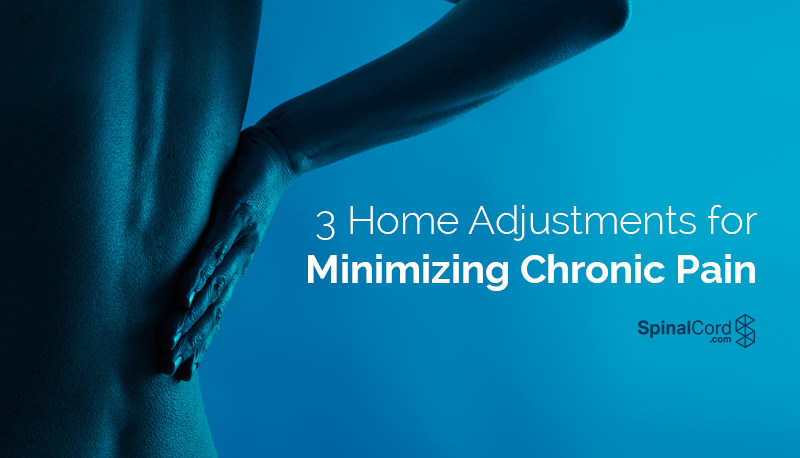3 Home Adjustments for Minimizing Chronic Pain

While most people with chronic pain focus on their bodies and how to alleviate pain using painkillers or other natural treatments, they often overlook the adjustments they can make to their surroundings to minimize pain. The truth is, you can minimize your chronic pain if you make a few adjustments to your home and your home life. Our tips will help you get started on the path to less pain at home.
Identify Daily Tasks that Aggravate Your Pain
If there are certain daily tasks you complete at home that aggravate your chronic pain, begin by making adjustments to them. For example, some people find that getting in and out of the bathtub aggravates their back pain because they have to step up and over the tub to get inside. You may hire a contractor to remove your tub and install a walk-in shower or a walk-in bathtub. Some people also find that using a transfer seat or bench aids them in getting in and out of the shower and minimizes their pain.
Other people find that housecleaning tasks aggravate their pain. For example, if your lower back pain increases when you wash your windows or scrub your floor, it is time to hire a housekeeper. Most housekeepers are happy to do the tasks that you request of them, so if you do not want them to clean your entire house but simply do the tasks that aggravate your pain, focus your interview questions on those matters. If you find a good housekeeper who is particularly busy, she may welcome the chance to do a few small tasks for you rather than cleaning your entire home.
Determine Whether Your Chairs Exacerbate Your Pain
If you spend a great deal of time in chairs or in bed because of your pain, you may actually be increasing your level of pain. Sitting in a seat that promotes slouching adds to pain levels, so be sure to have a chair that helps you sit up straight. It’s also important to recognize that ergonomic chairs and those with built-in lumbar support still can aggravate your back pain if you do not position them properly. In most cases, it is better to sit in a chair that tilts back slightly to take some of the load off your back and keep your feet planted on the floor. You may need to donate your chair to Goodwill and purchase one that allows you to tilt back while keeping your feet on the floor.
Keep in mind that sitting all day puts 30% more pressure on the spine than standing or walking, so you should be aware of the amount of time you are sitting even if you have your chair and your body properly positioned. Get up and stretch and walk around your home every hour to relieve back pain.
Choose the Right Mattress
Your bed can contribute to your pain as well. Your mattress may aggravate back pain if you notice that you have back pain when you first wake up but can stretch and minimize it within 15-30 minutes. Also, if you wake up frequently or toss and turn all night, there is a good chance your mattress is contributing to your back pain. People with chronic back pain should consider replacing their mattress if these descriptions fit them.
Everyone should replace a mattress every eight years regardless of pain to ensure adequate support while sleeping. When purchasing a mattress, look for one that is not too firm or too soft. While people with chronic back pain often look for the firmest mattress available, that is a mistake because mattresses that are too firm push on pressure points and lead to misalignment. Beds that are too soft, on the other hand, allow your body to sink and leads to poor posture that causes pain. Ideally, your mattress will support you and make you feel as though you are floating on air.
If you have followed your doctor’s advice and still are not getting enough relief from your chronic pain, make some adjustments to your home to minimize your pain. You may get relief by making adjustments to daily tasks, hiring a housekeeper, switching chairs, or getting a new mattress. If you’re experiencing neuropathic pain after a spinal cord injury, be sure to read this.
Stay Updated on Advancements On Traumatic Brain &
Spinal Cord Injuries
About the Author





